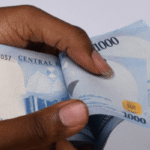What’s going on here?
The British pound sterling is punching the air after hitting a six-month high against the US dollar.
What does this mean?
The foreign exchange (forex) market doesn’t hand out Olympic medals – but if it did, God Save The King would be playing right now. The UK’s currency has been the best performing out of the Group of Ten nations this year, rising 3% against the greenback alone. That, er, sterling performance has been helped by an increasingly perky economy at home: the UK’s latest business activity survey showed a welcome combination of stronger growth, better job creation, and downright mild inflation. Interest rates are the biggest forex driver, though – and the higher they are, the more attractive a country’s currency appears to international savers and investors. So all eyes are on the Bank of England and the Federal Reserve: mere expectations of their next moves will likely determine where the pound and dollar go next.
Why should I care?
Zooming in: Cheap as chips.
According to Morgan Stanley, Europe’s big stock funds have been investing in AI-related firms, weight-loss drug superstar Novo Nordisk, and… British stocks. See, there’s plenty to like about the UK right now: historically “cheap” stock valuations, strong returns, enticing buybacks and dividends, and some new political stability. But those valuations have been stuck in the mud, in part because of a lack of interest among Brits themselves – roughly two-thirds of UK stock buyers come from abroad. And that would need to change for London’s shares to become more pricey.
The bigger picture: The hunt for magnificent… values.
Now the UK’s stocks aren’t exactly on the verge of overshadowing the Magnificent Seven: those glittery tech stocks have driven much of the S&P 500’s gains this year. But they could soon garner some glitz of their own. Interest rate cuts are expected to begin next month in the US (and they’ve already started in Britain), and that just might cast value stocks in a better light – like, you know, those in the UK.




















